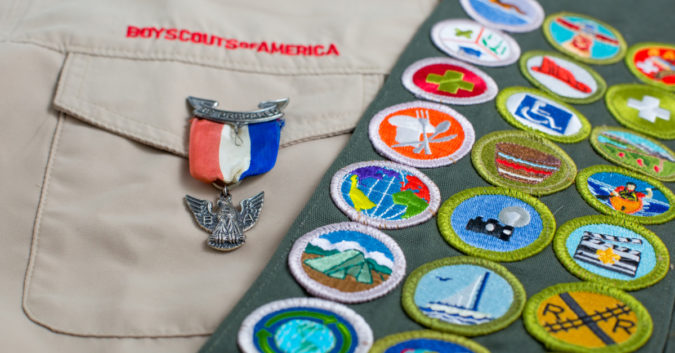Facing increasing legal pressure from survivors of child sexual abuse, the Boy Scouts of America (BSA) filed for Chapter 11 bankruptcy on February 18.
Currently, hundreds of child sexual abuse lawsuits have been filed against the organization, and thousands more are expected. The bankruptcy will likely freeze pending and future litigation against the BSA, which paid more than $150 Million to resolve sex-abuse claims between 2017-2019.
Moving forward, the bankruptcy protections will allow Boy Scouts to continue operating, but what does it mean for survivors of sexual abuse?
BSA to Establish a Victims Compensation Trust
Under Chapter 11, debtors such as the BSA are required to pursue the best interest of its creditors. In this case, the creditors are survivors coming forward with harrowing stories of abuse that occurred when they were children with the Scouts.
In order to prevent “sprawling and disorganized” litigation, the BSA has proposed the creation of a victims compensation fund. The fund would be established by the courts using assets from the BSA, and “potentially other parties,” according to the bankruptcy filing. All pending and future claims would be directed to the trust for administration and payment.
As proposed by the BSA, the move would shield its 261 local scouting councils from legal action associated with sexual abuse. A key issue moving forward will be the extent to which the councils will be forced to contribute to the victims compensation fund, as many survivors blame their local leaders for what happened, rather than the national organization.
Centralizing the process, the BSA argues, is the best way to make sure all of those harmed receive fair and equal treatment. In an open letter to survivors, Jim Turley, the National Chair of the BSA wrote:
“I encourage you, and all victims to come forward and file claims so you can receive compensation from this Trust. We will provide clear notices about how to do so.”
While such a step is a positive sign, some of the key details about the Boy Scouts’ bankruptcy plan have survivors and their advocates on edge.
Is the BSA Trying to Stifle Survivors’ Claims?
In its bankruptcy proposal, the BSA requested an 80-day deadline for survivors to file abuse-related claims with the victims compensation fund. If the organization gets its way, then people who suffered horrendous abuse will have an extremely limited window to take action.
It’s easy to recognize BSA’s desire to put this awful chapter behind them, but asking those they harmed to fast-track a major aspect of their recovery is a serious problem. Survivors of sexual abuse often live with PTSD, depression, fear, and anxiety. Cracking the whip is not the type of support these people need or deserve.
According to Child USA, a nonprofit think tank, survivors of child abuse have an extremely difficult time coming forward. The average age at which a survivor reveals their story is 52, more than 3 decades after they have reached adulthood. Approximately 25-33% of those abused as children pass away without ever disclosing what happened.
Given the long-term, painful consequences of child abuse, the proposed 80-day deadline is all but certain to shut the door on thousands of survivors who are still trying to reckon with a life-changing injury.
Limited Transparency in Bankruptcy
Compounding the problematic bar date for claims sought by the BSA are the strict confidentiality rules of the proposed victims compensation trusts. Instead of coming clean with the public, it appears the organization is preventing the names of known abusers from being published.
Since almost the beginning of its 110-year history, the BSA has kept secret files of volunteers who have been accused of sexual abuse. Some of the so-called “perversion files” have come out in court, but many are still hidden away from public view. An expert who reviewed the files between 1944-2016 found nearly 8,000 such volunteers who were named ineligible.
Many had hoped that any kind of “global” settlement reached with the BSA would include the publication of the organization’s secret list of abusers. And yet, many of the proposed terms of the bankruptcy are intended to keep this information from coming out.
Why is protecting the names of abusers more important than giving survivors evidence that might help them come forward?
It was wrong for the BSA to keep these files secret in the first place. To keep making the same mistake going forward is disturbing, especially for an organization supposedly dedicated to honesty.
Boy Scout Sex Abuse Lawsuits and Extended Statutes of Limitations
The Delaware court overseeing the BSA bankruptcy is expected to freeze the 275 ongoing child sex abuse lawsuits. The Scouts have asked for an injunction against continued prosecution for 180 days so that they can focus on the complex reorganization.
The stay of litigation also affects the approximately 1,400 claims that have yet to be filed. According to those working with these survivors, roughly 90% involve abuse that occurred more than 30 years ago.
In light of the institutional cover-ups of child sex abuse by the Catholic Church, USA Gymnastics, and others, many states have revised their laws to give more power to survivors who were silenced for years.
Some of the states have extended the statute of limitations for child sex abuse crimes, which allows people more time to file lawsuits. Others have created lookback windows that temporarily allow survivors to file child sex abuse claims regardless of when the crimes occurred.
If you, a family member, or someone you know was abused during their time in the Scouts, compensation may be available. Bankruptcy trust law is complex, and the courts may soon order a deadline for filing Boy Scout sex abuse lawsuits. To speak with an understanding advocate and find out your legal options, contact us today.
